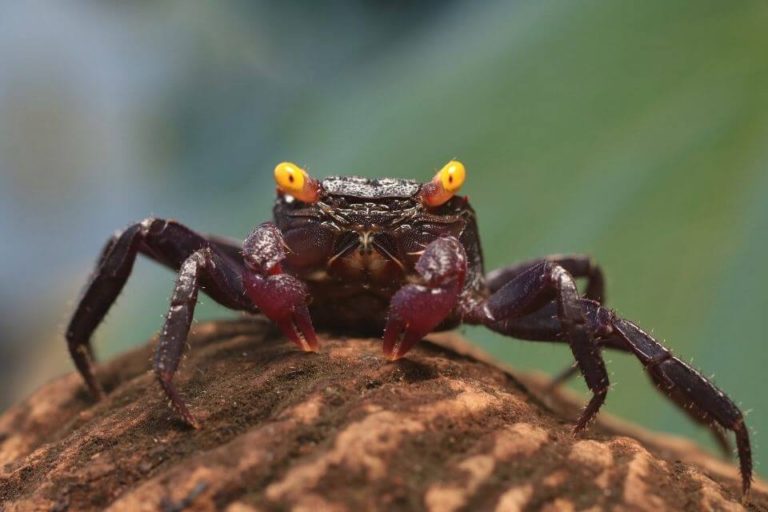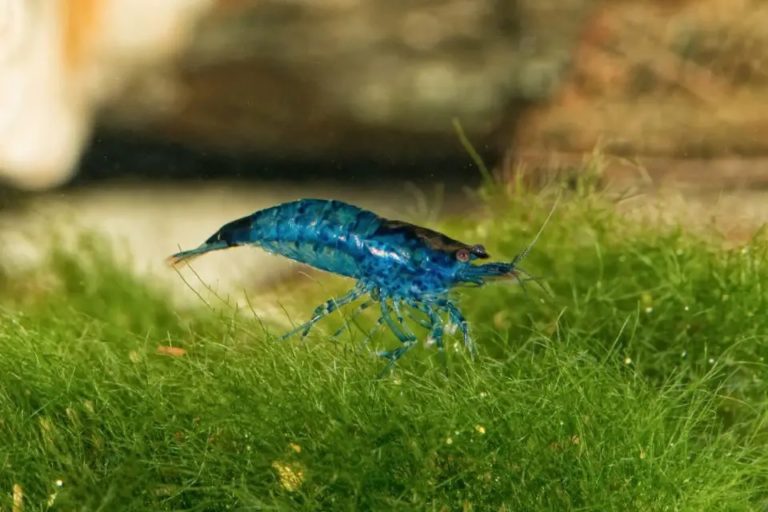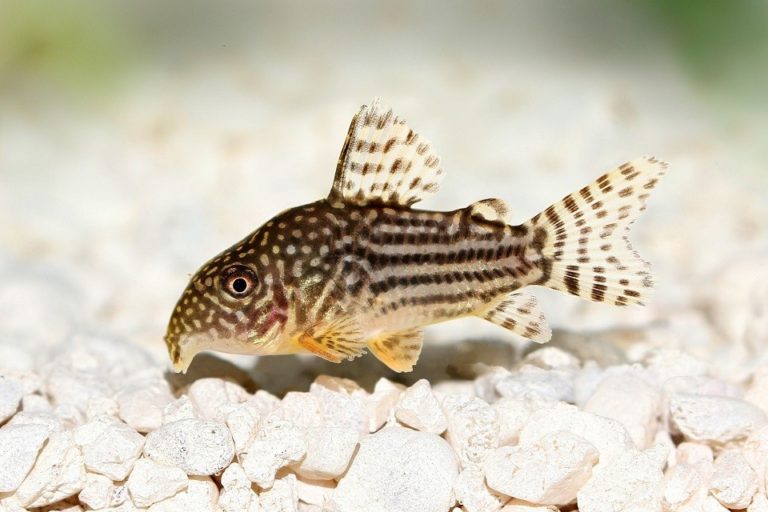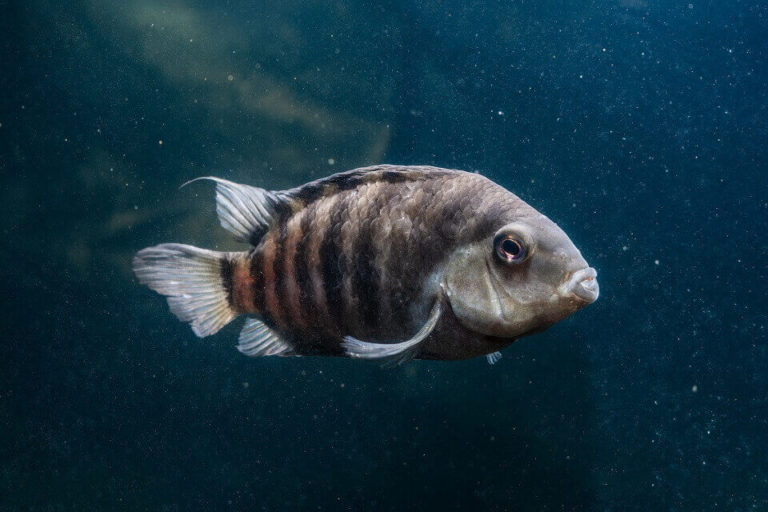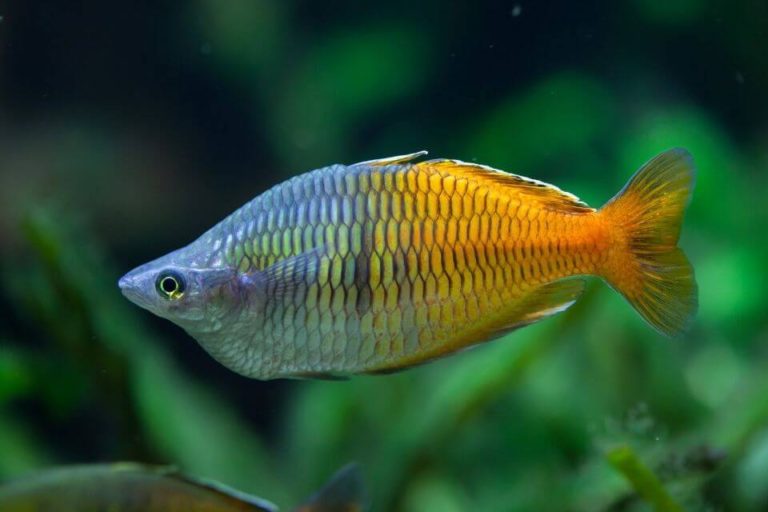Jack Dempsey Fish Care: Size, Lifespan, Diet, and Tank Mates
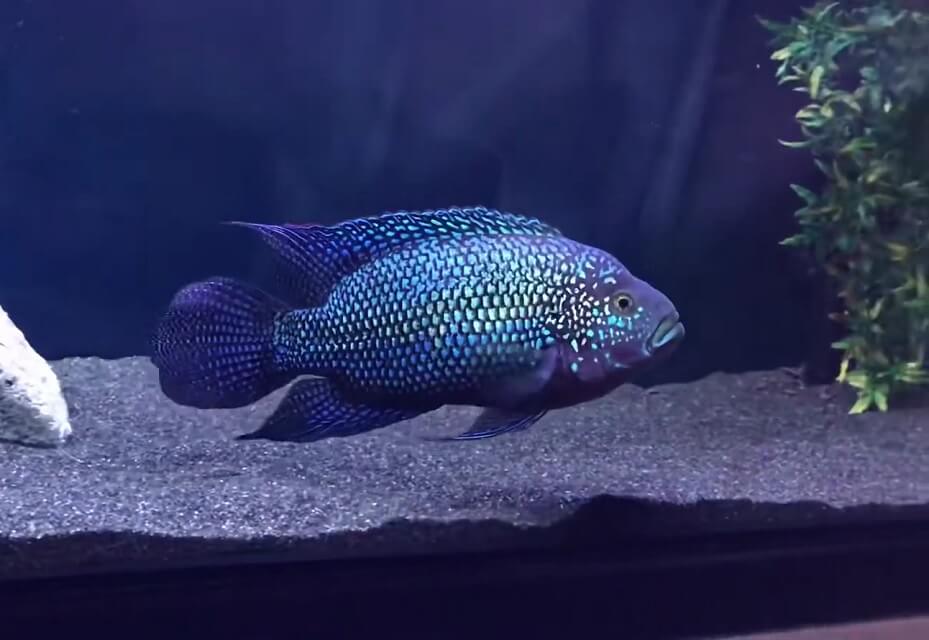
Jack Dempsey fish is among the most popular cichlids. Caring for the fish species is super easy since these tropical aquariums can adjust and cope with different conditions.
Starting a home aquarium can be both an exciting and daunting experience. It is a task that needs to be done with ultimate care. These freshwater beauties have won the heart of many aquarists in the world.
But many people are hesitant to breed the fish due to their aggressive behavior. We have compiled a comprehensive Jack Dempsey fish care guide for you. Take time to read through and learn how to combat aggressive behavior.
| Quick Facts: | |
|---|---|
| Common Names | : Jack Dempsey Fish, Jack Dempsey Cichlid |
| Scientific Name | : Rocio Octofasciata |
| Family | : Cichlidae |
| Origin | : Fresh waters in Central America |
| Care Level | : Intermediate |
| Lifespan | : 8 - 10 years |
| Size (average) | : 10 - 15 inches long |
| Diet | : Omnivores |
| Breeding | : Egglayer |
| Social | : Territorial |
| Temperament | : Aggressive |
| Minimum Tank Size | : 55 gallons |
| Temperature | : 72 - 86° F (22 - 30° C) |
| Water Hardness | : 9 - 20 dGH |
| Water pH Level | : 6.0 - 8.0 |
Overview of Jack Dempsey Fish
Jack Dempsey Cichlid (Rocio Octofasciata) is a fish species that belong to the family of Cichlidae. These fish species are common in the northern part of the South American continent.
The cichlid thrives in freshwater that has slow-moving waters. The native habitat of Jack Dempsey fish is in North and Central America like Mexico or Honduras.
They are found in slow-moving swampy areas with warm water. The slow-moving rivers, drainage ditches, and canals with muddy and sandy bottoms are the common places for them to survive.
These freshwater beauties derived their name from the famous 1920s boxer. Jack Dempsey fish had strong and aggressive facial features like that of this fish species.
The rapid diversification of these fish species allows them to survive in the warm waters. The warm waters are locally called the Mexican Blue Frontosa. You can now find these species in the United States Australia and Thailand.
These stunning fish species have a life expectancy of about 8 to 10 years. But optimal care and a healthy environment can make the fish have a lifespan of about 15 years.
It would be best to note that Jack Dempsey fish is a carnivore. The most exciting thing is that these fish species are readily available in many pet stores.
Keep in mind that each variety has its price tag. But it can be challenging to get a specific color to blend for your home aquarium.
Jack Dempsey Fish Size
Wild species are larger than those species in captivity. Male Jack Dempsey fish size in the wild is up to 15 inches, and the female counterpart is about 12 inches.
Female Jack Dempsey fish size in captivity grow up to 10 inches and males up to 12 inches. You need to ensure the aquarium has adequate space to accommodate the fish species.
Jack Dempsey Lifespan
The average Jack Dempsey fish lifespan is about 8 to 10 years. But proper care and maintenance will make the species experience a longer lifespan sometimes up to 15 years.
Jack Dempsey Fish Typical Behavior
Jack Dempsey fish species are not suitable for beginners. The aggressive traits are some of the things that put off many aquarists. If you are not a fan of aggressive aquarium fish, this is not an excellent choice for you.
The good news is that the aggressive nature of Jack Dempsey fish can be tamed. It would be best to keep them in a less populated tank to combat their aggressiveness.
A tank with few aquarium fish species makes it difficult for Jack Dempsey fish to single out and fight another tank mate. All you need to know is that these freshwater fish species spend most of their time hiding.
You can create more hiding caves in the tank to inhibit territorial disputes. Male Jack Dempsey fish loves to mark their territories, and they will try ways to fend off other fish species in the same tank.
Keep in mind that the breeding season changes the behavior, color, and attitude of the fish. Male species will become brighter with vibrant turquoise flecks. Besides that, the aggressive and territorial behavior will triple.
These male species will become more hostile to their tank mates. On the other hand, the female counterparts will experience color change and feel frisky. The specks on the gills and jaws will become brighter.
Appearance And Colors
Jack Dempsey fish species are known for showcasing aggressive behavior since they are territorial. It is one reason why the fish species are not suitable for beginners looking to start a home aquarium.
But keeping the fish species in a less populated tank may help to reduce the aggression. The fish will be unable to single out another species and cause disruption in the tank.
However, these freshwater beauties are shy, and they spend most of their time in their hideouts. It would be best to create more caves when looking to develop a home aquarium.
You Should also note that several caves help to calm the fish species. Research shows that even wild Jack Dempsey fish burrows into their substrate to hide and calm their aggression.
Jack Dempsey fish is long and has an oval-shaped body. They have pointed dorsal and anal fins with a rounded tail. Male species have longer and more elaborated fins than their female counterparts.
Juvenile species have prominent stripes on their bodies. These stripes are numerous when compared to those present in adult species.
Adult fish have stripes concentrated around the forehead, abdomen, and back. The compact body and coloration make the species an excellent option for your aquarium.

There are several species of Jack Dempsey fish, and these fishes come in different colorations. Some of the popular colors range from pink to green to blue to gold. These colors keep changing as the fish age and get subjected to stressful conditions.
Juvenile species are pale, and adult species are darker. The usual coloration of Jack Dempsey cichlid is a dark-gray body with conspicuous flecks in blue, gold, and green coloration.
The black spots are located on the abdomen and the base of the tail. Fins have a red band.
Female species have black spots on the gill cover and dorsal fin. Male counterparts have few flecks, and their body colors become brighter during mating season.
Juvenile Jack Dempsey fish have a tan-light background that comes along with subtle turquoise flecks. The spots and body colors usually fade when the fish experience high stressed surroundings.
Jack Dempsey Fish Care and Habitat
Jack Dempsey fish prefers habitats experiencing slow-moving freshwater in the wilderness. It is clear that these species thrive in swampy areas, murky streams, lakes, and canals.
Ensure the water is warm and slightly acidic. The tropical climate and less light will make the fish species experience a reduced stress environment.
The aquarium should also contain muddy and sandy substrates with debris sitting at the top. Remember to disperse green plants around the aquarium since they play a crucial role in fish life.
– Jack Dempsey Fish Tank Size
This fish is a medium to large fish species. It would be best to get a large tank to provide enough room for the freshwater beauty. A single fish might need about a 55-gallon tank and a pair of about 100-gallon tanks.
Place soft sandy and muddy substrate at the bottom of the tank. Jack Dempsey fish loves spending most of their time at a low level of water. Mix with some small gravels, rocks, and wood to help create hideouts.
These multiple caves at the bottom of the tank allow the fish to find and claim their territories. Besides that, these materials help to decorate your aquarium. Ensure the lighting is moderate.
– Suitable Plants
Fill the tank with vegetation to provide hiding spots and shelter. Get plants that are non-toxic and can withstand the destructive traits of Dempsey fish.
It would be best to consider a less destructive species. But the destructive nature of Dempsey fish is inevitable. We recommend checking on the plants and keep replacing them where possible.
Hornworts are the most recommended plants for these species. These floating plants help to ensure the habitat receives dim light. The moderate lighting increases Dempsey’s survival in the habitat.
– Water Temperature and Conditions
Jack Dempsey Cichlid species are freshwater fish. Tap water is suitable for adding to your home aquarium. But ensure the water has minimal chemical components. It will help to mimic a natural habitat in the wild.
The freshwater fish species thrive in warm water. It would be best to maintain the tank temperature to about 72 to 86° F (22 to 30° C). The water should also be slightly acidic with a pH of about 6 to 8. The water hardiness should stay at around 9 to 20 dGH.
– Common Diseases
Jack Dempsey fish species are highly susceptible to diseases like other freshwater fishes. The most prevalent disease affecting the species is a white spot. The parasitic disease is also known as Ich.
The disease usually results in the formation of white marks on the fish’s abdomen and fins. The parasitic infection occurs due to poor water conditions.
It is advisable to increase the water temperature to about 86° F (30° C). It creates an environment that helps to eliminate the parasitic infection and cure the fish.
Head and Lateral Line Erosion is another popular disease affecting Jack Dempsey fish. The condition is marked by the formation of pits on the head and face of the fish.
The disease occurs due to insufficient nutrients, over filtration, and poor water conditions. Supplying proper nutrients will help to cure your aquarium.
Other common diseases are skin flukes, worm or protozoa infestation, bacteria, and fungal infections. These diseases can put your fish at risk of dying.
Regular water replacement and cleaning of the tank are commendable. It is one of the ways how to improve the life expectancy of your aquarium.
Jack Dempsey Fish Diet and Feeding
Dempsey fish species are carnivores. These freshwater beauties hunt live prey for food in the wilderness. It would be best to supply the pet with a variety of feeds rich in animal proteins.
The staple diet of Dempsey should contain premium pelleted foods. Omega-one Cichlid pellets and Fluval Bug Bites contain high-quality proteins suitable for your fish species.
You can also provide live and frozen foods to supplement the fish diet. We recommend Brine shrimp, Bloodworms, Blackworms, and Daphnia.
Gender Differences of Jack Dempsey Fish
Telling the difference between male and female Dempsey fish is not difficult. But these species have close similarities that make it challenging to figure out the differences.
Keep in mind that telling the gender of juvenile species is hard when compared to adults. But the physical features and behaviors make things possible.
Male species have blue spots behind the eyes with no blotches near their mouth, while female counterparts have markings extended on the cheeks with large conspicuous blotches on the lower side of the cheek.
Male Jack Dempsey fish species are more aggressive towards other males during the mating session. It is the best method to consider when telling distinctions among juvenile species.
Also, male species are large, long, and bright than female species. The brightness of males becomes prominent during the mating season.
Jack Dempsey Fish Breeding
Jack Dempsey fish species are super easy to breed. The fish species do not require premium requirements that help to boost spawning. Keep in mind that Jack Dempsey fish became more aggressive and territorial during breeding.
The body coloration of the fish will change when ready to mate. You will notice male species harassing their female counterparts if the female fish refuse to mate.
But having a compatible pair in the aquarium makes breeding easier. The mating will take place without intervention from the aquarist.
Provide a conducive water temperature to encourage spawning. The species are known for producing over 500 eggs after mating. The substrate and aquarium décor will serve as the resting points for the eggs.
The hatching period occurs after three days, and the fish species usually protect their young ones. The Dempsey will dig small holes in the substrate to hide the offspring from potential predators. Both genders guarantee their maximum offspring protection.
Keep in mind that a stressful environment will make the adults feed on their offspring. It is advisable to keep an eye on them and ensure they are not disrupted. Provide adequate food during the breeding process.

Jack Dempsey Fish Tank Mates
Dempsey fish species are more aggressive and hostile to other fish species. Many aquarists recommend keeping Jack Dempsey Cichlid species only in one aquarium.
But you can still put these fish together with other fish species. Ensure the species chosen are similar in size and have aggressive traits. Keep in mind that these fish species will require a large aquarium.
Some of the Jack Dempsey fish tank mates are;
Ensure the bottom of the aquarium has multiple caves for hiding. These hideouts help make the Dempsey species stay calm since they will spend most of the time hiding.
Origin, Distribution, and Availability
The name Jack Dempsey Cichlid was derived from the famous 1920s professional boxer. The world heavyweight champion came from the United States of America.
The professional boxer was very strong with aggressive facial features. This cichlid has similar features to that of the world heavyweight champion.
This species is robust and has aggressive facial features. But these cichlids have other unique features that make them stand out from other freshwater fish species.
The scientific name of Jack Dempsey fish is Rocio Octofasciata. Where Rocio is a genus name that represents the discoverer’s wife’s name. The Spanish meaning of the genus name is morning dew.
The native habitat of Rocio Octofasciata is North and Central America. The specific locality is Southern Mexico, Belize, Honduras, and Guatemala. These regions are also known as the Mexican Blue Frontosa.
These freshwater beauties have also been introduced in Australia, Thailand, and the United States of America. The ease of adapting to different conditions is the reason behind their widespread use.
Keep in mind that the natural habitat experiences slow water movement. It implies that they prefer rivers, streams, and canals. Warm and murky swamp areas can also create an excellent habitat.
This species is not on the list of most endangered species in the world and the number of the living population is very high.
Besides that, these freshwater fish species are readily found in pet stores and you can also buy them from online stores at an affordable price.
FAQs
Are Jack Dempsey Fish Aggressive?
Caring for Dempsey fish is super easy. But experienced aquarists will have an easier time than beginners. These fish species come with some supplications that give beginners a hard time.
So, is Jack Dempsey fish aggressive? Absolutely. The aggressive nature of the fish species is what put off many aspiring aquarists. The aggressive behavior may result in a fight with the tank mates.
But keeping the species in a populated tank will help to combat the aggressive character. The fish will find it challenging to single out and pick up a fight with other tank mates.
Male species are known to be more aggressive and territorial than their female counterparts. The level of aggressiveness usually increases during the mating season.
It would be best to create multiple caves in the aquarium. The fish species prefer to spend most of their time in the cave, which might help them stay calm.
Do Jack Dempsey Cichlid Eat Other Fish?
Jack Dempsey fish are the most popular species of Cichlids. The species are aggressive and territorial. These are some of the traits that put off potential aquarists looking to breed them.
So, does Jack Dempsey fish eat other fish? Yes. The species are carnivores, and they can hunt live prey for food. These fish species rely on animal proteins for their survival.
The trait happens to be the reason why aquarists need to keep an eye on their juvenile after hatching. But the behavior occurs when the species are receiving inadequate food and living in a stressful environment.
The most exciting thing is that Dempsey fish species can still be kept with other fish species. But you need to have a lot of experience in managing their aggressive and hostile behavior.
How Many Jack Dempsey Fish Should Be Kept Together?
Dempsey fish is an excellent species to consider in your aquarium. The body coloration and movement in water will help to improve your space.
So, can you keep Dempsey fish together? Absolutely. These fish species usually gel with each other perfectly when compared to other species.
It would be best to keep a pair of Jack Dempsey fish in a tank. This will make breeding easy and give the aquarist opportunity to pursue other things. Also, it will help to reduce fights during mating and claiming of territories.
The idea is suitable for beginners and not experts.
Can We Put Jack Dempsey Fish in Community Tank?
Jack Dempsey fish is a large cichlid, and the aggressive traits usually scare many aquarists. The good news is that the behavior can be tamed with ease.
So, can we put Jack Dempsey fish in a community tank? Yes. The fish species are aggressive and territorial. But the chances of killing their tank mates are quite minimal.
Proving the fish species with sufficient food and multiple hideouts will help to tame their aggressive behavior. The fish will stay calm and spend most of their time in the caves.
Final Thoughts
Every aquarium has a unique design. Not all aquariums can accommodate Jack Dempsey fish species. It is advisable to get a tank that is specifically meant for Dempsey fish species.
Jack Dempsey fish is not a fussy species despite having aggressive traits. Caring for these fish species is super easy for either beginners or experienced aquarists.
The species have a simple diet and can cope with different conditions. But beginners will struggle to keep the fish species healthy in the beginning.
We hope this information will be helpful to think of adding these colorful fish to your freshwater aquarium.
If you feel that we need to discuss anything else in this article, please leave your comment below. We will address your concerns and questions ASAP.


